There is a bunch of stuff I don’t know. I think im going to use the same strat of buying another test prep after I go through this one. It seemed to work well with the MCSA. I don’t think this is as hard but to be honest there is somewhat more of a learning curve for me with this stuff as I don’t know anything about networking. I’ve always thought that I am not smart enough to get any kind of Cisco cert but now that I’ve made it this far, I think I would like to at least try for a CCNA some time. Maybe start on it Q4 next year. Any way, here is that thing I do where I go through test questions that and write out answers. This is the most popular blog in the Known universe lol
What is any of this???
- MU-MIMO- MU-MIMO stands for multi-user multiple input and multiple output. It builds on single-user MIMO (SU-MIMO), which was introduced close to a decade ago with the 802.11n standard.
- LWAPP- Lightweight Access Point Protocol or LWAPP is the name of a protocol that can control multiple Wi-Fi wireless access points at once. This can reduce the amount of time spent on configuring, monitoring or troubleshooting a large network.
- PoE- power over eithernet
- MIMO- multiple transmitters and receivers to transfer more data at the same time. All wireless products with 802.11n support MIMO. The technology helps allow 802.11n to reach higher speeds than products without 802.11n.
Yeah, ok that one, also, makes sense once I know what the answers are.
again, no idea what any of this stuff is. How am I going to remember all of these acronyms.
- PPPoE – PPPoE stands for Point-to-Point Protocol over Ethernet, a network protocol for encapsulating Point-to-Point Protocol (PPP) frames inside Ethernet frames. It is used mainly with DSL services where individual users connect to a DSL modem over Ethernet.
- MPLS – Multiprotocol Label Switching (MPLS) is a routing technique in telecommunications networks that directs data from one node to the next based on short path labels rather than long network addresses, thus avoiding complex lookups in a routing table and speeding traffic flows.
- ATM – Asynchronous transfer mode (ATM) is a switching technique used by telecommunication networks that uses asynchronous time-division multiplexing to encode data into small, fixed-sized cells. This is different from Ethernet or internet, which use variable packet sizes for data or frames.
- SIP – Session Initiation Protocol (SIP) is a signaling protocol used for initiating, maintaining, modifying and terminating real-time sessions that involve video, voice, messaging and other communications applications and services between two or more endpoints on IP networks.
While not specifically stated in the answer the diagrams for PPPoE do clearly state that a user name and password is required.
I have no idea what SC or ST cable is, so lets start there. Lol so apparently when you google either of these things it comes with information that they are both fiber cables, who knows the difference and the reset of the information is specific to a Net+ question so, I guess this is a memorize question. I did find some information about an adapter that converted the plugs, so that would appear to be the issue.
What the hell is a label-switching router? “An MPLS router that performs routing based only on the label is called a label switch router (LSR) or transit router. This is a type of router located in the middle of an MPLS network. It is responsible for switching the labels used to route packets.”
I have no idea what that means haha. Oh ok, so there’s this thing where you use labels instead of IP addresses? Isn’t that just a host name? Who knows. What ever but regardless this thing uses that type of tech. So what is MPLS, again, “MPLS is scalable and protocol-independent. In an MPLS network, data packets are assigned labels. Packet-forwarding decisions are made solely on the contents of this label, without the need to examine the packet itself. This allows one to create end-to-end circuits across any type of transport medium, using any protocol. The primary benefit is to eliminate dependence on a particular OSI model data link layer (layer 2) technology, such as Asynchronous Transfer Mode (ATM), Frame Relay, Synchronous Optical Networking (SONET) or Ethernet, and eliminate the need for multiple layer-2 networks to satisfy different types of traffic. Multiprotocol label switching belongs to the family of packet-switched networks.”
Ok, so im aware of that and the answer is obvious but what is the rest of this stuff?
- BGP – Border gateway protocol (https://searchnetworking.techtarget.com/definition/BGP-Border-Gateway-Protocol)
- OSPF – Open Shortest Path First (OSPF) is a routing protocol for Internet Protocol (IP) networks. It uses a link state routing (LSR) algorithm and falls into the group of interior gateway protocols (IGPs), operating within a single autonomous system (AS). (it uses a formual to calulate the shortest distance between the two points) more detail…..Routing protocols like OSPF calculate the shortest route to a destination through the network based on an algorithm. The first routing protocol that was widely implemented, the Routing Information Protocol (RIP), calculated the shortest route based on hops, that is the number of routers that an IP packet had to traverse to reach the destination host. RIP successfully implemented dynamic routing, where routing tables change if the network topology changes. But RIP did not adapt its routing according to changing network conditions, such as data-transfer rate. Demand grew for a dynamic routing protocol that could calculate the fastest route to a destination. OSPF was developed so that the shortest path through a network was calculated based on the cost of the route, taking into account bandwidth, delay and load.[4] Therefore OSPF undertakes route cost calculation on the basis of link-cost parameters, which can be weighted by the administrator. OSPF was quickly adopted because it became known for reliably calculating routes through large and complex local area networks.[5]
- IS-IS- This doesn’t make a lot of sense and it seems like legacy tech so im not going to spend a bunch of time on it.
What is a CSU/DSU device? A CSU/DSU (channel service unit/data service unit) is a digital-interface device used to connect data terminal equipment (DTE), such as a router, to a digital circuit, such as a Digital Signal 1 (DS1) T1 line. The CSU/DSU implements two different functions.
Alright, its like NIC for T1 lines. Do people still use those?
Channel bonding? Again, no fucking clue haha. Channel bonding is a practice commonly used in IEEE 802.11 implementations in which two adjacent channels within a given frequency band are combined to increase throughput between two or more wireless devices. This seems to be a fairly loose definition as I’m also seeing mention of combining two network conenctions for faster nic speeds.
I’m exactly clear on what any of these answers mean other than WAN.
- CAN – A Controller Area Network (CAN bus) is a robust vehicle bus standard designed to allow microcontrollers and devices to communicate with each other in applications without a host computer.
- PAN – A personal area network (PAN) is a computer network for interconnecting devices centered on an individual person’s workspace. A PAN provides data transmission among devices such as computers, smartphones, tablets and personal digital assistants.
- MAN – A metropolitan area network (MAN) is a network that interconnects users with computer resources in a geographic area or region larger than that covered by even a large local area network (LAN) but smaller than the area covered by a wide area network (WAN).
I don’t think this is correct but ok. D seems like the appropriate answer.
This is more complicated than im used to. Normally a gateway router and forward is ISP and a company router and back is us. I suppose it would be helpful to know what some of this stuff is.
- Demarc – lol, this is literally the answer. like the definition is the answer. A demarc (an abbreviation for demarcation point) marks the point where communications facilities owned by one organization interface with that of another organization. In telephone terminology, this is the interface between customer-premises equipment and network service provider equipment.
- IDF – An intermediate distribution frame (IDF) is a distribution frame in a central office or customer premises, which cross-connects the user cable media to individual user line circuits and may serve as a distribution point for multipair cables from the main distribution frame (MDF) or combined distribution frame (CDF) to individual cables connected to equipment in areas remote from these frames.
- CSU/DSU – T1 modem
- 110 block – A 110 block is a type of punch block used to terminate runs of on-premises wiring in a structured cabling system. The designation 110 is also used to describe a type of insulation displacement contact (IDC) connector used to terminate twisted pair cables, which uses a punch-down tool similar to the older 66 block
Ok so, demarc it is.
That’s all for now. I finished this up at work so I guess work posting is a thing. I wanted to get it taken care of last night but had to run a bunch of errands and went to the gym. I was exhausted by the time I got home.

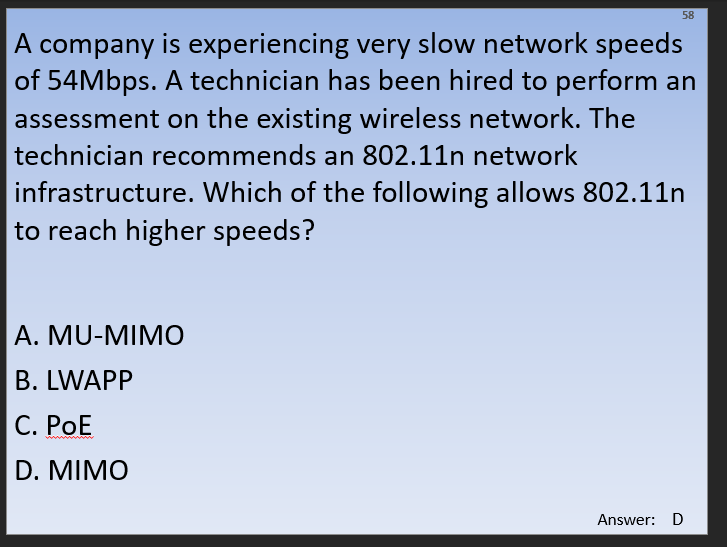
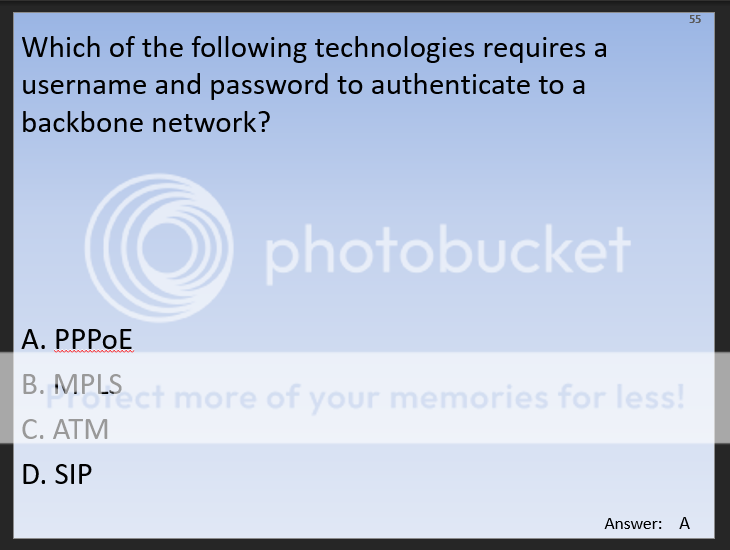
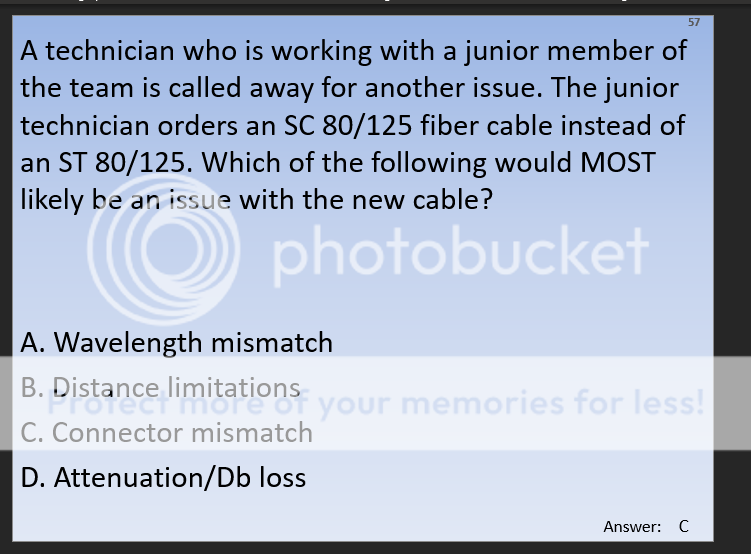
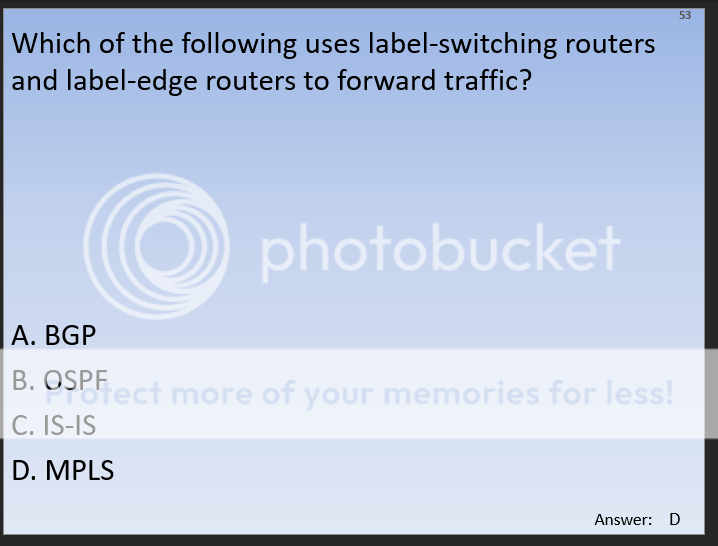
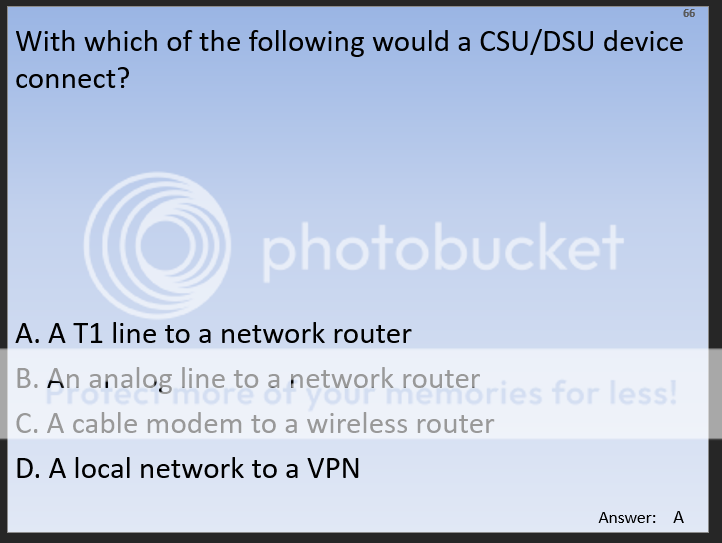
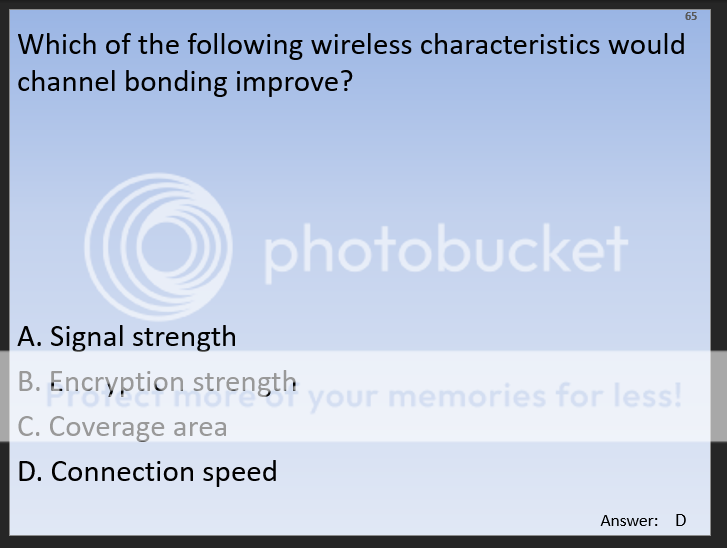
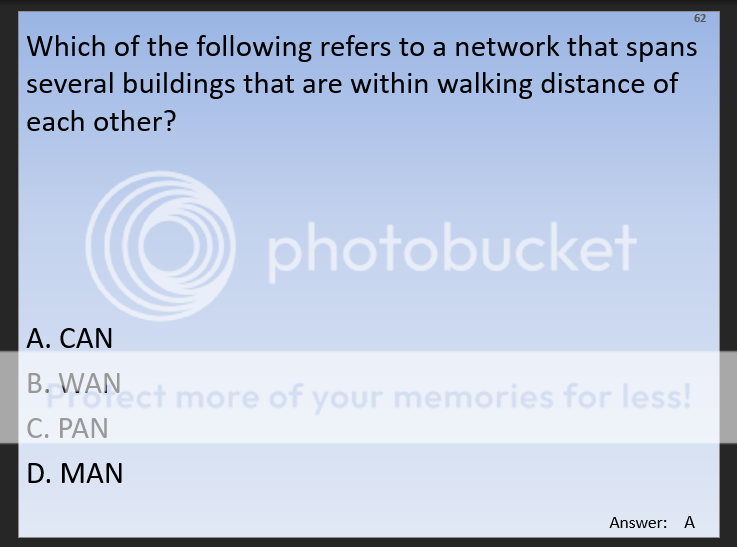
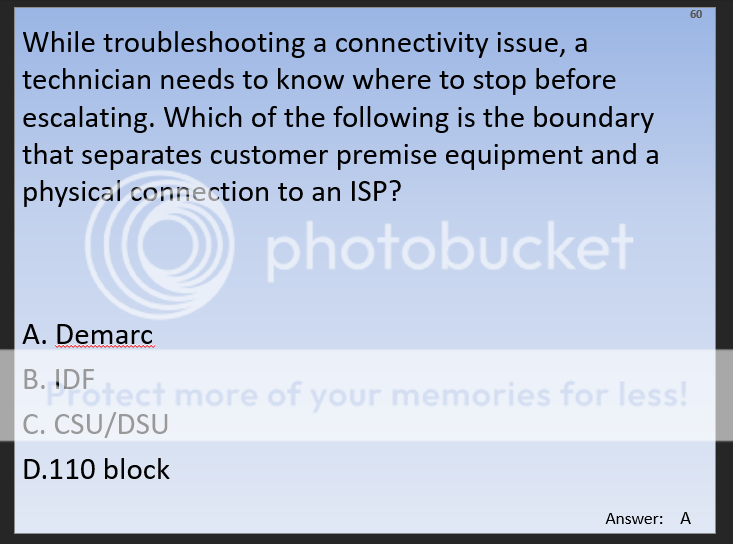
Leave a comment